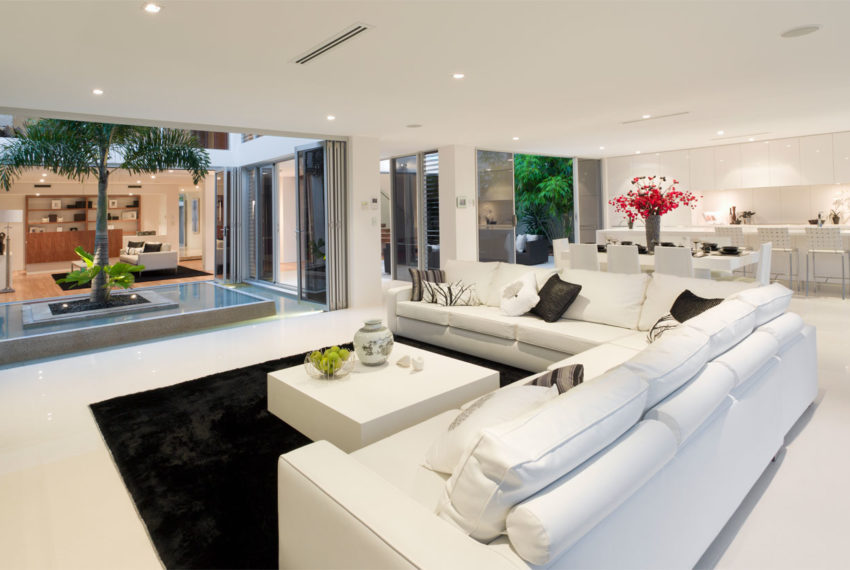
How to Stage Your Vancouver Home For Sale
Planning to sell your home In Vancouver? It may sound like a fairly simple thing to do: list the house on the market, wait for prospective buyers, accept an offer and voila, house sold. In reality, it’s not quite as simple and with most areas becoming heavily populated with new housing developments, you’ll have stiff competition in the market.
The potential return on investment for every $100 put into home staging is $400 according to the United States National Association of Realtors. On average, 17% additional profit is attributed to a staged home (over a non-staged home) with 95% of staged homes selling in 11 days or less. Statistically, that is 87% faster than non-staged homes.
Home staging is about revealing a home’s potential. Plus psychology! By neutralizing it and revamping to portray a lifestyle, buyers can more fully picture themselves there. One needs the buyers to want to come do a walk-through at the minimum and the photos they’ve viewed online for the property can make or break the desire to even see it. Not all buyers are skilled at seeing potential. By doing some of that work for them you increase interest. You often only get one chance for a first impression! It also helps keep your property ahead of that aforementioned competition. And remember, many buyers are making the purchase of a lifetime. They want to feel good in that process.
Specific techniques to showcase the home’s architectural features allows stagers to make rooms feel inviting and spacious. The target market for the home is also a focus. Spaces designed for young singles, empty-nesters and families will all be unique to the demographic. After a walk-through, a stager will make suggestions on which existing pieces in the home will be assets and which should be removed. A high, medium and low budget option will be offered for re-design. Sometimes stagers bring their own pieces from their arsenal and often, rent them.
Think of it the same way you would a stage upon which a play may be mounted – items are arranged in such a way as to give the ‘stage’ a different look than if it were just bare. The same applies to your home!
How to Stage Your Vancouver Home For Sale
1. Curb Appeal – First Impression Matters
First impressions really do matter when someone wants to purchase a new home. Have professional landscapers work to ensure your lawn and yard look top notch. This includes flower beds, decorative trees and walkways. Also aim to have the exterior painted or power washed to give it a sparkly new appearance. Add just a few decorative items like a planter on each side of the front door and a cute welcome mat to make guests feel at home – their home!
2. An Empty Home No-No
Unfurnished rooms actually feel smaller so a buyer might be thwarted when they can’t see how their own furniture could fit or be positioned with ease. Flaws become noticeable when a home is vacant. A buyer could also incorrectly interpret a home needing extensive help when it only requires minimal cosmetic updating. Vacancy may also read as desperation and that could mean lower offers.
3. Thorough Cleaning & Clutter Clear-out
It goes without saying that your home should be cleaned inside and out. Ensure that the kitchen is spotless with chrome and appliances sparkling, windows crystal clear. Bathrooms and bedrooms should be made with fresh towels and linens as though your buyers were walking into a nice high-end hotel room. The trick is to make everything look new yet warm, comfy and inviting. Don’t forget to work hard on decreasing all the clutter! The quickest way to squash a feeling of ease and flow is piles of random clutter.
4. The Importance of Lighting
Many people don’t realize how important lighting is when it comes to staging a home. Ensure that all bulbs are functioning and that there are no empty light sockets anywhere in the home. Create warm ambient lighting in rooms—particularly the living room and bedrooms—while adding bright light in areas like the kitchen and bathroom. Finish the lighting off by adding wallplates and other mounts that suit the overall feel of the home but add a polished overall effect.
5. Hide Your Pets
There’s nothing wrong with having pets, but when you’re showing a house, it’s wise to have them visit a friend! Some buyers may be afraid of pets while others may have allergies. You don’t have to mention that you have pets unless asked, however, be sure to remove all traces of pet fur, dander and cat litter boxes. Basically, anything that would make the home look unclean or have a strange smell.
6. Upgrade But Don’t Remodel
It’s worth the money to perform some small upgrades that can greatly increase not only interest, but value in the home. Is the paint fresh? Neutral doesn’t have to be boring but avoid shocking colours. Do the bathrooms have outdated fixtures? You can replace these from your local home improvement store and it won’t break your bank. The same goes for the kitchen – if the sink has some stains, it should be replaced. Cracks in the counter? Replaced. Old worn flooring? It’s a must. But an overall remodel isn’t recommended as your taste may not be the buyer’s taste. Spend money on upgrades and cosmetic fixes rather then trying to get an extensive remodel return on investment.
7. Depersonalize
While it may seem quaint and cozy to have all of your family pictures placed around the home, potential buyers want to imagine what their family pictures and favorite mementos would look like there. So it’s a good idea to put your personal items—photos, certificates, crests, plaques—away while you’re showing the house. Additionally, be mindful with religious and political items or others that may offend. Put them away and stay neutral.
8. Show Available Closet Space
One thing most people can agree on is that there just never seems to be enough closet space in their home! To give the impression that your home has ample storage space, start by removing as much of your own belongings from your closets as possible. Then, neatly organize the items that you’ve left in the space so that they buyer can see that there’s plenty of room for them to store their things.
9. New Flooring
As mentioned, the home’s worn flooring—carpet, lino or tiles—should be replaced. Nothing gives a home a more clean and new look than great floors. Once you’ve upgraded, you can place nice area rugs around the furniture to give the home a warm inviting look. Remember, if you’ve already replaced the flooring, this is one less reason for a buyer to attempt to low-ball the sale.
10. Add a Touch of Personality
Be progressive with a few touches that are on trend such as a little addition of fun colour in something small like pillows or curtains but avoid anything too overbearing or out there. You don’t want to alienate a potential buyer. Also, fresh flowers and plants will bring pops of colour and life into the space. A little feeling of the outdoors inside propagates a happy, lived-in feel. A stager will know how to balance this.
Summary
As you can see, there are many simple ways to increase the appeal of your Vancouver home simply by staging it properly. Adding just the right touch here, removing an item there, can make all the difference to factors like number of interested buyers, sale time, offers and the final offered price. The key thing to remember is that potential buyers want to be able to envision themselves in your home and how their furnishings would look. Providing them a nice clean canvas to start with is everything!



Robert Almeida
Thanks for sharing such a valuable information regarding Real Estate! I really appreciate this article, as it includes beneficial tips for selling out houses. Highly recommended!